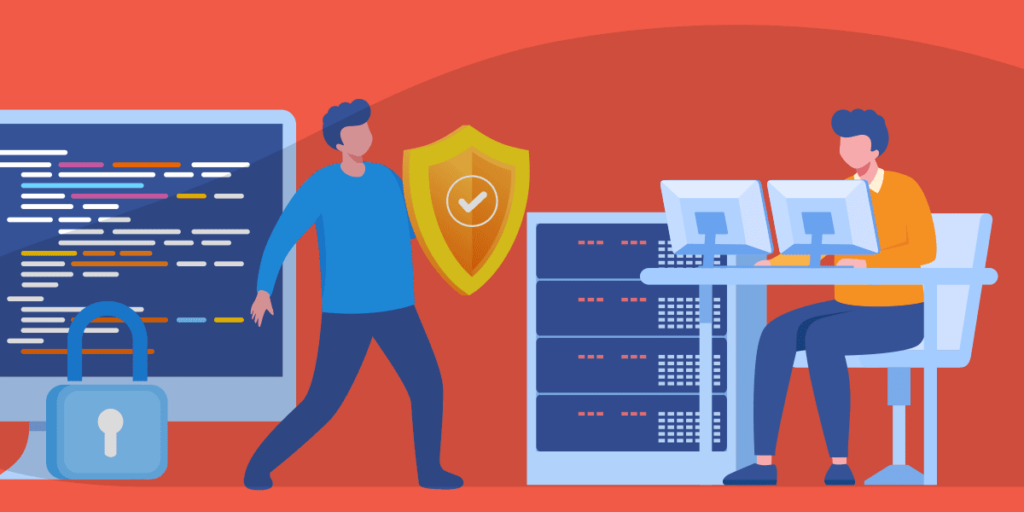Security patch management is an essential organizational capability. This article explains why before detailing some common methods for undertaking patching.
This article by @gilad_maayan explains why patch management is an essential organizational capability & details some common methods for undertaking patching. #patchmanagement #security #infosec Click To TweetWhat is Patch Management?
Patch management is the process of deploying and applying software updates, usually to fix software bugs or security issues. Almost any computer system occasionally requires patching—including computer hardware, operating systems, applications, and embedded systems such as network devices. Regularly patching systems can help organizations manage and mitigate risks in an IT environment. When software vulnerabilities are discovered after software or hardware is released, the vendor releases a software patch that can remediate the vulnerability. It’s critical to apply these security patches urgently. Otherwise, the system can be openly exploited by attackers. Software patches can also address stability and performance issues that negatively affect a system’s users.
Why Is Security Patch Management Important?
Patch management is an essential element of an organization’s cybersecurity strategy, with unpatched operating systems and applications a leading cause of cybersecurity breaches. To help identify these risks in your environment, you can use application dependency mapping tools to identify the full hierarchy of software packages on servers and endpoints.
Patch management is an essential element of an organization’s #cybersecurity strategy, with unpatched operating systems and applications a leading cause of cybersecurity breaches – @gilad_maayan #patchmanagement Click To TweetA fast and efficient security patch management process, complemented by continuous monitoring and detection of vulnerabilities, can help minimize the risk of attacks. In addition to improving the security posture, patching systems can improve their performance and reduce downtime or malfunctions caused by unsupported or outdated software. In many cases, patches include new benefits and features, making end-users happier or helping businesses operate more efficiently.
Security patch management also has a compliance angle, with it explicitly required by many regulatory and industry standards. Failure to apply patches to sensitive systems could result in fines or legal penalties.
Your #patchmanagement process should ensure that every endpoint that connects to the corporate network, regardless of its location or owner, is appropriately patched – @gilad_maayan Click To TweetThe security patch management process should ensure that every endpoint that connects to the corporate network, regardless of its location or owner, is appropriately patched.
How Do Patch Management Systems Work?
There are two main types of patch management systems—those that patch multiple systems and those that can patch only a single system. Those patching a single system perform periodic checks to find available patches and typically install and download new patches automatically.
However, maintaining the consistency of software versions in a corporate network requires a centralized patch management approach rather than having each machine download patches independently. A central patch management solution employs a centralized server to perform the following:
- Checking network infrastructure for missing patches
- Downloading missing patches
- Distributing patches to various devices across the network according to specified patch management policies.
It allows your organization to benefit from:
- Automation. The central patch management server automates patch management and extends control over the entire process. It enables organizations to make decisions and changes to the process. For example, if a patch has a problem, the admin can set up the patch management tool to prevent the deployment of the patch.
- Bandwidth savings. Central patch management helps conserve Internet bandwidth, enabling the server to download each patch only once and then distribute it to every computer that requires it.
- Managed service provider (MSP) services. In addition to operating patch management in-house, organizations can employ an MSP to perform security patch management with the other network management services they provide to clients. MSP patch management can help minimize in-house administrative work, freeing staff to focus on other aspects.
Three Automated Methods for Patching
- Dedicated Patch Management Solutions. Automated patch management tools regularly scan and apply patches without human intervention. These tools can identify vulnerabilities as soon as they are made known, ensuring teams can test or fix the issue immediately. The traditional automated patch management system was deployed on-premises to support in-house IT networks. As networks moved to the cloud, using diverse networks of servers from various providers like Amazon Web Service (AWS) and Google Cloud, cloud-native patching automation emerged. Cloud-native patching automation helps organizations manage multiple systems and software regardless of the location. These solutions can apply patches 24/7 to ensure downloads and installations do not disrupt workdays and eliminate human errors from the process.
- Software Configuration Analysis (SCA). This solution allows developers to safely leverage open-source software packages without exposing their organizations to vulnerabilities, as well as legal and compliance issues. When vulnerabilities are discovered in open-source code, they are often found and patched by community members. However, the burden of updating the component to the new version, or applying the patch, rests with the developer. Once the vulnerability is discovered, it is only a matter of time before a publicly available exploit makes it easy for attackers to exploit the issue. SCA creates a software bill of materials (SBOM) that contains all open-source components used in the application. SBOM lists the package version, known vulnerabilities, and details about the license for each component in use. This provides visibility that helps developers and IT operations staff understand the risks inherent in open source components, update them if possible, and if not, remove them from production applications.
- Endpoint Security Tools to Automate Security Patch Management. Endpoint security tools have significantly evolved over the past decade. What started as a limited solution that provides antivirus scanning has evolved into advanced platforms that offer multiple defensive measures, including next-generation antivirus (NGAV), endpoint detection and response (EDR), and, more recently, extended detection and response (XDR). Endpoint security tools can help organizations identify endpoints containing vulnerabilities and automatically deploy patches to specific endpoint groups at scheduled times. They also enable teams to set organization-wide policies for endpoint security patch management. Many endpoint security platforms make it possible to deploy patches based on type, severity, or vendor, and schedule deployments based on multiple criteria. It can even be possible to automatically test patches before approving deployment to discover any compatibility or productivity issues.
I hope this security patch management article is helpful as you level up your ability to manage patches to reduce security risks.

